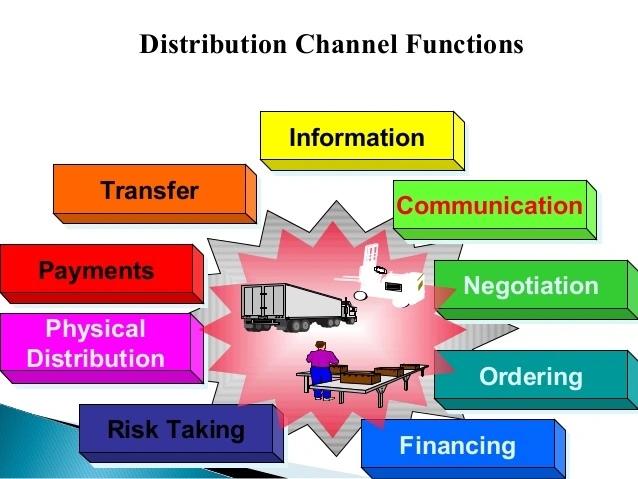Placing goods and services where they are required and when they are wanted is the area of concern of this article. Marketing channel decisions are among the most important decisions that management grapples with.
A company’s channel decision directly affects every other marketing decision. For example, the company’s pricing depends on whether it uses mass merchandisers and high-quality specialty stores.
The firm’s sales force and advertising decisions depend on how much persuasion, training, and motivation the dealers need.
Whether a company develops or acquires certain new products may depend on how well those products fit the abilities of its channel apparatus.
Most producers use intermediaries to bring their products to the market. The use of intermediaries has become necessary in making goods available to target markets.
Channels of Distribution
The term channel of distribution is used to refer to the various intermediaries who help in moving products from the producer to the consumer.
There are a variety of middlemen and merchants who act as intermediaries between producers and consumers. Stanton (1981: 283) defines the channel of distribution for a product as the route taken to get to the ultimate consumer or industrial user.
A channel always includes both the producer and the final customer for the product, as well as all middlemen involved in the title transfer. Even though agents and middlemen do not take actual title to the goods, they are included as part of a distribution channel.
This is because they play such an active role in the transfer of ownership. A Channel of distribution is also defined as a system put in place to move goods and services from producers to customers, made up of people and organizations, supported by various facilities, equipment, and information.

However, Armstrong and Kotler (1994) submit that a distribution channel is “a set of interdependent organizations involved in the process of making a product or service available for use or consumption by the consumer or industrial user”.
Read Also: Defend the Importance of the Accounting Cycle to a Business
Channels of distribution are the most powerful element among marketing mix elements. Many products ‘died in their infancy’ because they never had the right road to the market.
However, by developing a sound distribution network and launching aggressive advertisement campaigns, a company can carve out a niche for itself. Channels of distribution help the movement of goods from one place to another and thus create place utility.
They make it possible for the consumer to get the goods when he wants them and thus create time utility. They bring goods to the consumer in a convenient shape, unit, size, style, and package and thus create convenient value.
Also, they make it possible for the consumer to obtain goods at a price he is willing to pay, and under conditions that bring him satisfaction and pride of ownership, thus creating possession utility.
It should, however, be noted that the concept of marketing channels is not limited to the distribution of physical goods alone; producers of services and ideas also face the problem of making their goods accessible to their target consumers.
Channels of distribution can be grouped under two major headings, namely; direct selling by manufacturers and indirect selling through middlemen.
Functions of Distribution Channels
The functions performed by the members of the marketing channels are as follows:
i) Information- Gathering and distributing marketing research and intelligence information about actors and forces in the marketing environment needed for planning and aiding exchange.
ii) Promotion- Developing and spreading persuasive communication about an offer.
Contact- finding and communicating with prospective buyers.
iii) Matching- Shaping and fitting the offer to the buyer’s needs, including such activities as manufacturing, grading, assembling, and packaging.
iv) Negotiation- Reaching an agreement on price and other terms of the offer so that ownership or possession can be transferred.
v) Physical Distribution- Transferring and storing goods.
vi) Financing- Acquiring and using funds to cover the costs of the channel work.
vii) Risk-taking- Assuming the risks of carrying out the channel work.
Read Also: Classification of Marketing Functions
